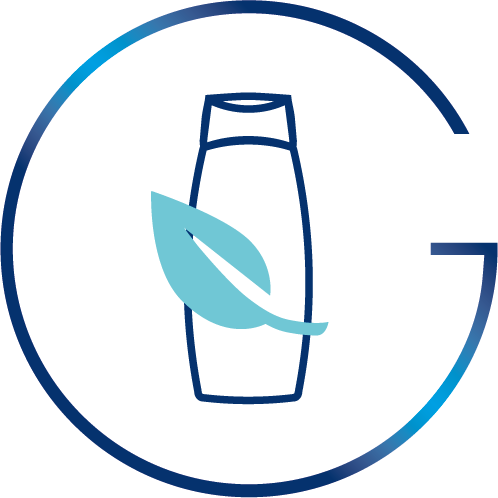
People- and environment-friendly packaging
One of the primary directions of the Sustainable Development Strategy of the Dr. Miele Cosmed Group S.A. is the proper management of the circular economy area (CE). In the era of EU Taxonomy, CSRD, the undoubtedly growing consumer awareness and the fight against greenwashing, we know that the competitiveness of products is no longer based purely on the implementation of eco-design principles, increasing the amount of recyclate in packaging or reducing waste in production. Nowadays, the market, from the legislator to the buyer and consumer, expects a much broader, holistic approach: not selective, but based on transparent indicators. Hence, we have set ourselves ambitious goals by 2024, which show us the path to sustainable packaging.
Plastics used in unit packaging |
Plastics used in closures and labels |
Recyclate in packaging |
|||
87% of the bottles/unit packaging of our products are made of materials preferred for recycling (LPDP, HDPE, PP, PET)
|
99% of the labels and 81% of the closures of our products are made of monomaterials preferred for recycling (LPDP, HDPE, PP, PET, paper)
|
We are gradually introducing packaging with recyclate; currently 15% of unit packaging contains recyclate, of which 2/3 is made of 100% recyclate |
Soot-dyed plastics |
Adhesives soluble in water at 85 degrees C or Hot Melt |
Paints on the EuPia list |
|||
99% of our packaging is soot-free
|
99% of our labels meet these conditions
|
100% of the paints used meet EuPia standards and are not on the exclusion list |
The tool that guides us along the path to fully sustainable packaging is the ZPT Project, i.e. the Integrated Manufacturing Process, adopted by the highest authorities of the company. It covers 100% of products under Dr. Miele Cosmed Group S.A. brands. It was developed by members of the ESG Council and members of individual Departments during internal and external consultation hours (including visits to waste recovery facilities or organisations of people with disabilities). It helps systematise our knowledge about the impact of a product at each stage of the value chain and deploy measurable actions that improve its economic, environmental and social impact.
ZPT describes the product from the point of view of 8 dimensions relevant to the consumer, the customer and in terms of ESG factors. Each of the dimensions is described by specific actions, which in turn are measured by indicators (qualitative and quantitative). Importantly, many of the elements operate at the interface of various Departments and the combined Teams are responsible for developing optimal solutions.
Our goal is to introduce fully recyclable packaging to the market, adapted to the current layout of the material collection and recovery system, while still being economically viable. What is extremely important, we want the products manufactured in our factories to be available to everyone and the packaging to not be a barrier to use. Therefore, we pay great attention to the so-called universal design.
Along with the adoption of the rules and objectives for product packaging, bulk and transport packaging are being improved.
